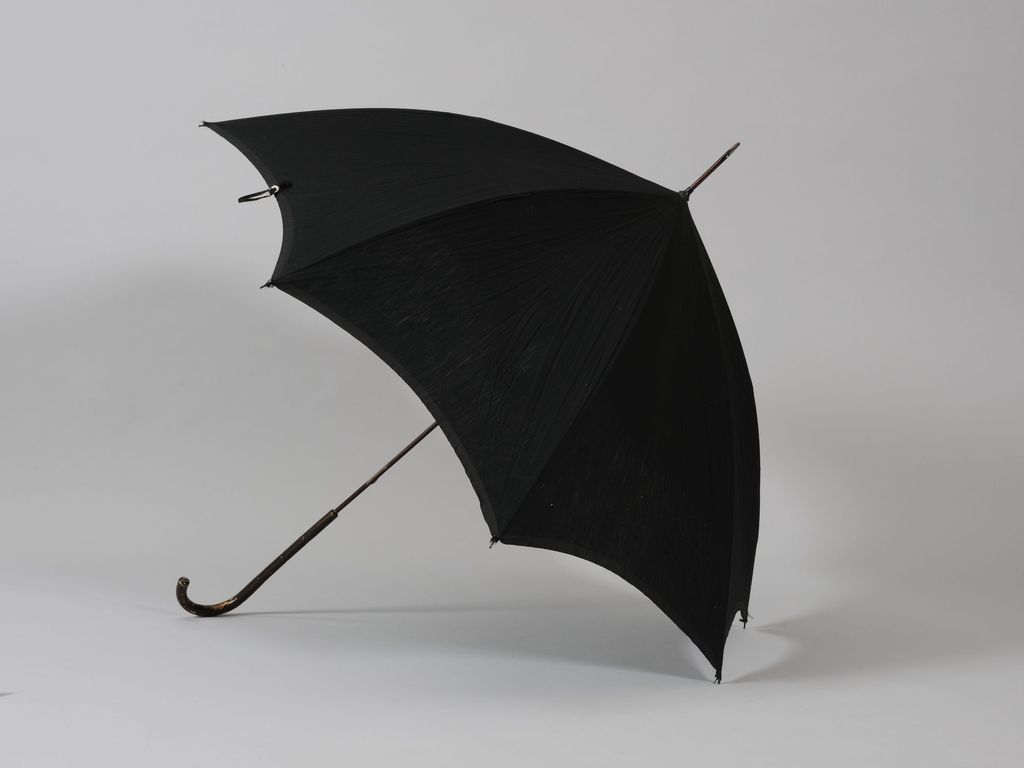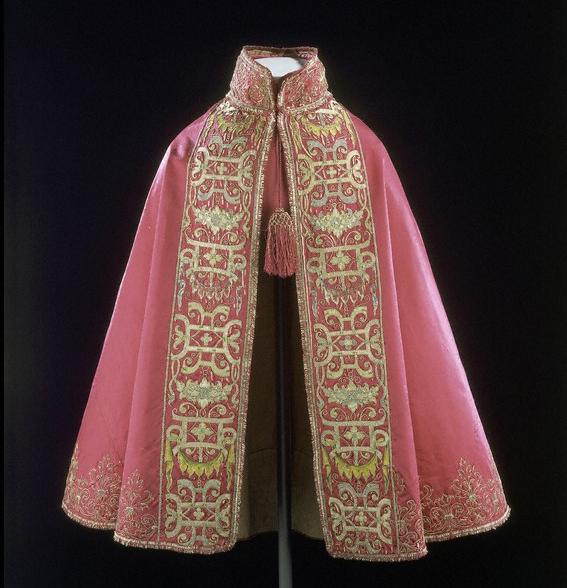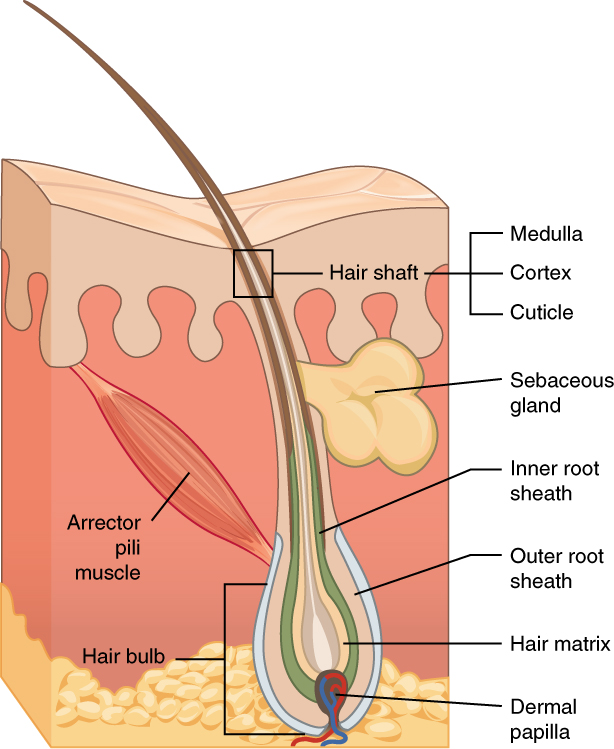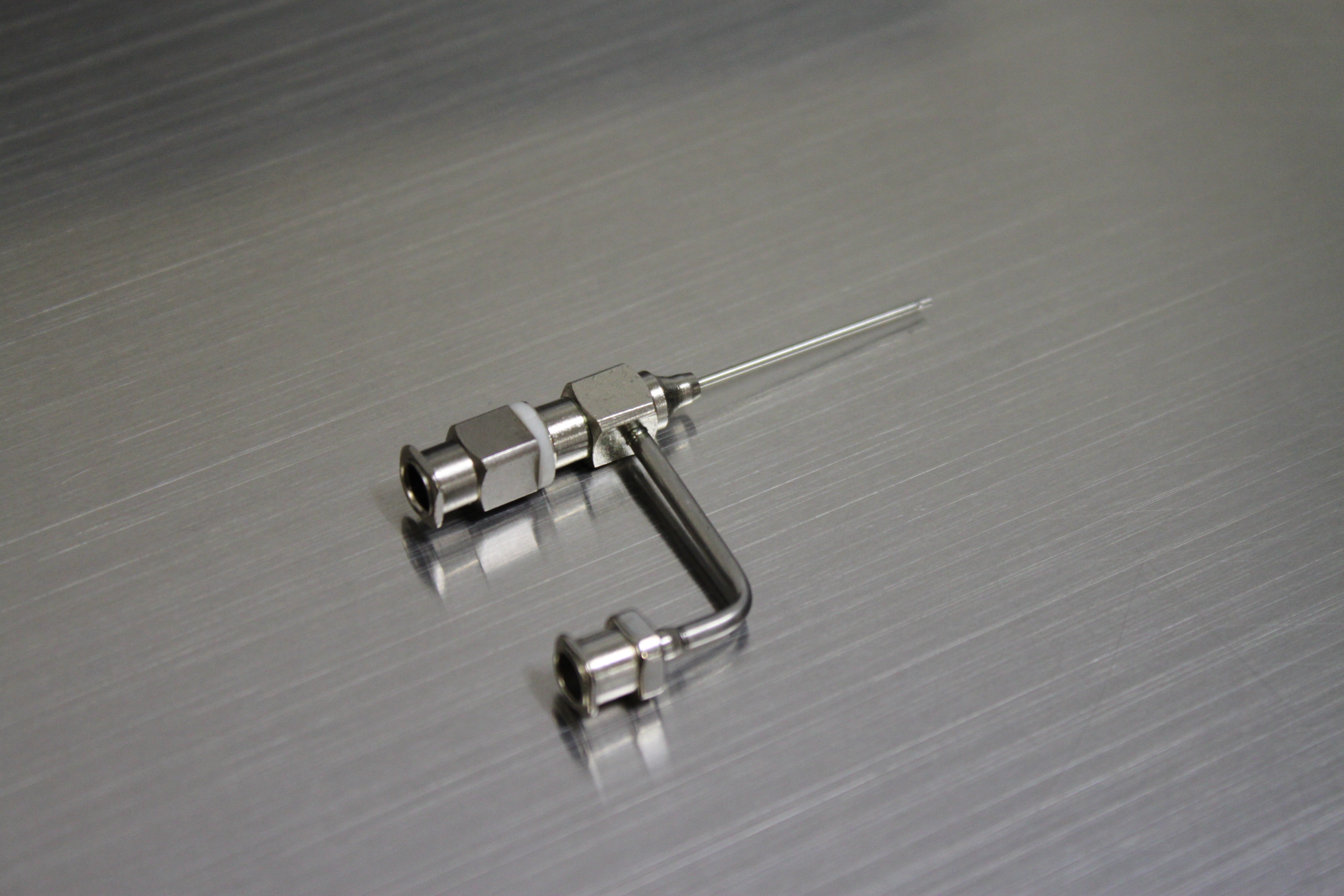|
Cross Section (fiber)
The cross section depicts the shape of the various textile fibers. Each textile fiber offers a distinct cross sectional appearance when seen under a microscope. The shapes vary from round to oval and flat, different shapes determines certain characteristics of the textiles. Though the majority of synthetic fibers have a circular cross section, but the shape could be altered or engineered during the manufacturing process. The cross-sectional shape is responsible for certain physical properties of textile fibers such as the luster of textiles. Significance The cross-section of a fiber has an effect on the appearance, hand, drape, flexibility, and moisture wicking properties. The cross sectional shape or form of the fibers specifies their texture. Numerous physical characteristics such as hand, bulkiness, and luster are associated with cross sectional shape. Synthetic fibers with a more regular surface seem brighter than natural fibers with an irregular surface, with the exception ... [...More Info...] [...Related Items...] OR: [Wikipedia] [Google] [Baidu] |
Textile
Textile is an Hyponymy and hypernymy, umbrella term that includes various Fiber, fiber-based materials, including fibers, yarns, Staple (textiles)#Filament fiber, filaments, Thread (yarn), threads, and different types of #Fabric, fabric. At first, the word "textiles" only referred to woven fabrics. However, weaving is not the only manufacturing method, and many other methods were later developed to form textile structures based on their intended use. Knitting and Nonwoven, non-woven are other popular types of fabric manufacturing. In the contemporary world, textiles satisfy the material needs for versatile applications, from simple daily clothing to Bulletproof vest, bulletproof jackets, spacesuits, and Medical gown, doctor's gowns. Textiles are divided into two groups: consumer textiles for domestic purposes and technical textiles. In consumer textiles, Aesthetics (textile), aesthetics and Textile performance#Comfort, comfort are the most important factors, while in techn ... [...More Info...] [...Related Items...] OR: [Wikipedia] [Google] [Baidu] |
Fiber Crop
Fiber crops are field crops grown for their fibers, which are traditionally used to make paper, cloth, or rope. Fiber crops are characterized by having a large concentration of cellulose, which is what gives them their Strength of materials, strength. The fibers may be chemically modified, like in viscose (used to make rayon and cellophane). In recent years, materials science, materials scientists have begun exploring further use of these fibers in composite materials. Due to cellulose being the main factor of a plant fiber's strength, this is what scientists are looking to manipulate to create different types of fibers. Fiber crops are generally harvestable after a single growing season, as distinct from trees, which are typically grown for many years before being harvested for such materials as wood pulp fiber or Lagetta lagetto, lacebark. In specific circumstances, fiber crops can be superior to wood pulp fiber in terms of technical performance, Environmental degradation, en ... [...More Info...] [...Related Items...] OR: [Wikipedia] [Google] [Baidu] |
Surface Contour (fiber)
A surface, as the term is most generally used, is the outermost or uppermost layer of a physical object or space. It is the portion or region of the object that can first be perceived by an observer using the senses of sight and touch, and is the portion with which other materials first interact. The surface of an object is more than "a mere geometric solid", but is "filled with, spread over by, or suffused with perceivable qualities such as color and warmth". The concept of surface has been abstracted and formalized in mathematics, specifically in geometry. Depending on the properties on which the emphasis is given, there are several inequivalent such formalizations that are all called ''surface'', sometimes with a qualifier such as algebraic surface, smooth surface or fractal surface. The concept of surface and its mathematical abstractions are both widely used in physics, engineering, computer graphics, and many other disciplines, primarily in representing the surfaces of ph ... [...More Info...] [...Related Items...] OR: [Wikipedia] [Google] [Baidu] |
Textile Performance
Textile performance, also known as fitness for purpose, is a textile's capacity to withstand various conditions, environments, and hazards, qualifying it for particular uses. The performance of textile products influences their appearance, comfort, durability, and protection. The different textile applications ( automotive, clothing, sleepwear, workwear, sportswear, upholstery, and PPE) require a different set of performance parameters. As a result, the specifications determine the level of performance of a textile product. Textile testing certifies the product's conformity to buying specification. It also describes product manufactured for non-aesthetic purposes, where fitness for purpose is the primary criterion. Engineering of high-performance fabrics presents a unique set of challenges. The fitness for purpose of textile products is an important consideration for both producers and buyers. Producers, distributors and retailers favor the expectations of the target mark ... [...More Info...] [...Related Items...] OR: [Wikipedia] [Google] [Baidu] |
Aesthetics (textile)
Aesthetics in textiles is one of the basic concepts of Textile performance, serviceability of textiles. It is determined by the perception of Somatosensory system, touch and Visual perception, sight. Aesthetics imply the appearance and attraction of textile products; it includes the Color of clothing, color and Texturizing#Texture, texture of the Textile, material. It is a statement about the end user (consumer) and the target market. When combined with fabric construction, the finish of the clothing material, garment fit, style, and fashion compatibility, colours create an aesthetic comfort. All of these elements work together to satisfy our visual perception. Aesthetics incorporates the role of evaluation (analysing and judging) also. There are various Textile arts, arts and Finishing (textiles), applications that imparts aesthetic properties in textiles. Additionally, the use of Light-emitting diode, LEDs and Optical fiber, optical fibres enables the creation of aesthetic pro ... [...More Info...] [...Related Items...] OR: [Wikipedia] [Google] [Baidu] |
Follicle (anatomy)
A follicle is a small, spherical or vase-like group of cells enclosing a cavity in which some other structure grows or other material is contained. Thyroid follicles make up the thyroid gland. Follicles are best known as the sockets from which hairs grow in humans and other mammals, but the bristles of annelid The annelids (), also known as the segmented worms, are animals that comprise the phylum Annelida (; ). The phylum contains over 22,000 extant species, including ragworms, earthworms, and leeches. The species exist in and have adapted to vario ... worms also grow from such sockets. References {{reflist Skin anatomy Cells ... [...More Info...] [...Related Items...] OR: [Wikipedia] [Google] [Baidu] |
Hair
Hair is a protein filament that grows from follicles found in the dermis. Hair is one of the defining characteristics of mammals. The human body, apart from areas of glabrous skin, is covered in follicles which produce thick terminal and fine vellus hair. Most common interest in hair is focused on hair growth, hair types, and hair care, but hair is also an important biomaterial primarily composed of protein, notably alpha-keratin. Attitudes towards different forms of hair, such as hairstyles and hair removal, vary widely across different cultures and historical periods, but it is often used to indicate a person's personal beliefs or social position, such as their age, gender, or religion. Overview Meaning The word "hair" usually refers to two distinct structures: #the part beneath the skin, called the hair follicle, or, when pulled from the skin, the bulb or root. This organ is located in the dermis and maintains stem cells, which not only re-grow the hair afte ... [...More Info...] [...Related Items...] OR: [Wikipedia] [Google] [Baidu] |
Animal Fiber
Animal fibers or animal fibres (see spelling differences) are natural fibers that consist largely of certain proteins. Examples include silk, hair/ fur (including wool) and feathers. The animal fibers used most commonly both in the manufacturing world as well as by the hand spinners are wool from domestic sheep and silk. Also very popular are alpaca fiber and mohair from Angora goats. Unusual fibers such as Angora wool from rabbits and Chiengora from dogs also exist, but are rarely used for mass production. Not all animal fibers have the same properties, and even within a species the fiber is not consistent. Merino is a very soft, fine wool, while Cotswold is coarser, and yet both Merino and Cotswold are types of sheep. This comparison can be continued on the microscopic level, comparing the diameter and structure of the fiber. With animal fibers, and natural fibers in general, the individual fibers look different, whereas all synthetic fibers look the same. This provide ... [...More Info...] [...Related Items...] OR: [Wikipedia] [Google] [Baidu] |
Body Orifice
A body orifice is any opening in the body of an animal. External In a typical mammalian body such as the human body, the external body orifices are: * The nostrils, for breathing and the associated sense of smell * The mouth, for eating, drinking, breathing, and vocalizations such as speech * The ear canals, for the sense of hearing * The nasolacrimal ducts, to carry tears from the lacrimal sac into the nasal cavity * The anus, for defecation * The urinary meatus, for urination in males and females and ejaculation in males * In females, the vagina, for menstruation, copulation and birth * The nipple orifices Other animals may have some other body orifices: *cloaca, in birds, reptiles, amphibians, and a few mammals, such as monotremes. *siphon in mollusks, arthropods, and some other animals Internal Internal orifices include the orifices of the outflow tracts of the heart, between the heart valves. See also *Internal urethral orifice *Mucosa * Mucocutaneous boundary *Meatus ... [...More Info...] [...Related Items...] OR: [Wikipedia] [Google] [Baidu] |
Spinneret (polymers)
A spinneret is a device used to extrude a polymer solution or polymer melt to form fibers. Streams of viscous polymer exit via the spinneret into air or liquid leading to a phase inversion which allows the polymer to solidify. The individual polymer chains tend to align in the fiber because of viscous flow. This airstream liquid-to-fiber formation process is similar to the production process for cotton candy. The fiber production process is generally referred to as "spinning". Depending on the type of spinneret used, either solid or hollow fibers can be formed. Spinnerets are also used for electrospinning and electrospraying applications. They are sometimes called ''coaxial needles,'' or ''coaxial emitters.'' Spinnerets are usually made of metals with melting points too low to withstand the heating processes employed in industrial metallurgy, and thus are generally not used to form metallic fibers. See also * Electrospinning * Hollow fiber membrane * Spinning (polyme ... [...More Info...] [...Related Items...] OR: [Wikipedia] [Google] [Baidu] |
Fiber
Fiber (spelled fibre in British English; from ) is a natural or artificial substance that is significantly longer than it is wide. Fibers are often used in the manufacture of other materials. The strongest engineering materials often incorporate fibers, for example carbon fiber and ultra-high-molecular-weight polyethylene. Synthetic fibers can often be produced very cheaply and in large amounts compared to natural fibers, but for clothing natural fibers have some benefits, such as comfort, over their synthetic counterparts. Natural fibers Natural fibers develop or occur in the fiber shape, and include those produced by plants, animals, and geological processes. They can be classified according to their origin: * Vegetable fibers are generally based on arrangements of cellulose, often with lignin: examples include cotton, hemp, jute, flax, abaca, piña, ramie, sisal, bagasse, and banana. Plant fibers are employed in the manufacture of paper and textile ... [...More Info...] [...Related Items...] OR: [Wikipedia] [Google] [Baidu] |
Trilobal
In fibers, trilobal is a cross-section shape with three distinct sides. The shape is advantageous for optical reflective properties and is used in textile fibers. Silk fibers' rounded edges and triangular cross section contribute to their luster; in some cases, synthetic fibers are manufactured to mimic this trilobal shape to give them a silk-like appearance. Filaments with a round cross section have less brilliance than trilobal filaments. Etymology is a combination of the words "Tri" for three and "lobal" for sides. Objective Trilobal shape helps in altering hand and increasing the luster. Many synthetic fibres, such as polyester and nylon, are manufactured in Trilobal cross sectional shape for the purpose of enhancing the brilliance and changing the handle. Luster adds aesthetic values in fabrics, contributes to their attractiveness. Occasionally, this adds value to their quality assessment. In: Use Synthetic fibers are particularly suitable for specific effects su ... [...More Info...] [...Related Items...] OR: [Wikipedia] [Google] [Baidu] |








